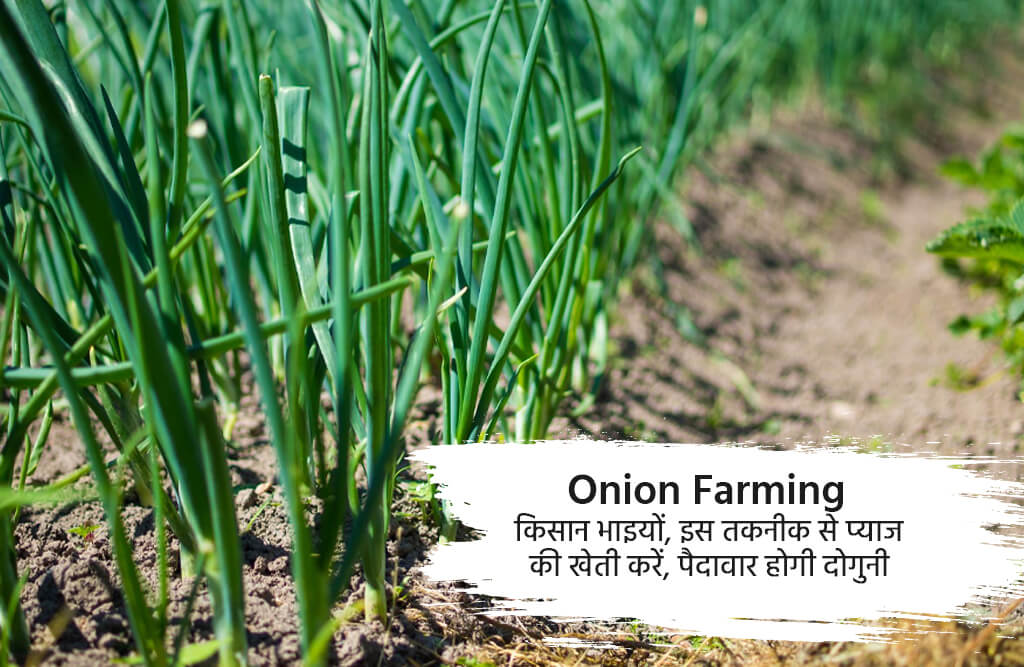
The fruit of this plant is found in the roots. Additionally, onions are also referred to as "kanda" in many places. It contains various nutritional elements, making onion consumption beneficial for the body, particularly in reducing radiation. Onions are a significant vegetable and spice crop, containing proteins and some vitamins in small quantities. Onions are rich in medicinal properties. Onion soup, pickles, and salads commonly use onions. Madhya Pradesh is the largest onion-producing state in India. In an unprecedented move to improve domestic availability and stabilize increasing onion prices, the government has implemented several measures. Onions hold a prominent position as a major export commodity for India, generating substantial revenue through commercial organizations engaged in onion exports to countries worldwide.
For the cultivation of onions, a warm and humid climate is suitable, making it a Rabi crop. However, cultivating it during the Kharif season can also yield profitable results. The ideal temperature for germination of onion seeds is between 20 degrees Celsius to 25 degrees Celsius. Adequate water supply is crucial during the seed sowing phase, and irrigation should be light and timely. This crop thrives in well-draining soil for efficient water drainage. To promote higher yield, the soil around onion plants should be elevated. Subsequently, perform 2 to 3 hoeing or harrowing operations. After each hoeing, ensure that mulching is applied to retain moisture, while also ensuring the soil remains loose. Incorporate well-rotted manure and compost along with beneficial bacteria for soil enrichment. Opt for drip or sprinkler irrigation in the field.
For onion cultivation, it is advisable to mix 20 to 25 tons of well-rotted manure or compost with 80-100 kilograms of potash per hectare. This enhances the soil's fertility. Compost manure should be incorporated into the soil during the initial hoeing. Seeds should always be sown in rows. For the Kharif season crop, maintain a spacing of 5-7 cm between lines. Following this, spread compost and dry grass mulch between the rows to conserve soil moisture. Irrigation should be initiated with furrows first. To protect the seedlings from excessive rainfall, it is beneficial to use a polythene shelter or poly tunnel. The first hoeing of the field should be done with a plow that flips the soil. Subsequently, perform 2 to 3 hoeing operations using a cultivator or harrow, ensuring the soil remains loose and well-aerated.
During the Kharif season when onions are sown, it is essential to carry out irrigation as per the requirements of the crop. It should be noted that there should be no water scarcity during bulb formation, as this is a crucial stage in the onion crop cycle. Insufficient water during this stage can lead to a significant reduction in yield, while excessive water invites diseases like Purple Blotch. The field should not be kept dry for an extended period; otherwise, the bulbs may crack, and the crop will mature prematurely, resulting in reduced yield. Therefore, it is advisable to provide light irrigation at intervals of 8-10 days, based on the crop's needs.
Soil Preparation for Onion Cultivation: Perform deep plowing and turn the soil 1 to 2 times to make it well-aerated. After plowing, level the soil and create furrows. For enhanced onion yield, keep the soil open with a mixture for two weeks so that it can undergo aeration.
Major Varieties of Onions:
Harvesting and Income from Onion Crop: Onion crops are ready for harvesting within 4 to 5 months. It is crucial not to initiate digging prematurely; wait until the onion bulbs reach their full size, and the leaves start to dry and turn yellow. The best time for harvesting is when the onions have completed their growth cycle. During the Kharif season, the yield of onions can range from 250 to 300 quintals per hectare. Farmers can potentially earn a substantial income, ranging from 3 to 4 lakhs annually, by cultivating onions.
Diseases in Onion Crop and Prevention: